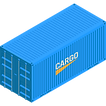Daviteq Technologies
NB-IOT
Narrowband IoT (NB-IoT) is a cellular-based LPWAN technology developed by 3GPP. It is designed for massive IoT deployments where devices send small amounts of data periodically, with long battery life and deep coverage, including underground or remote areas.
How Does NB-IoT Work?
NB-IoT operates in licensed spectrum (sub-1GHz and above), leveraging existing cellular infrastructure. Devices connect directly to the nearest cellular base station, eliminating the need for local gateways.

NB-IoT relies on existing cellular infrastructure, so its data transmission system typically includes:
1. IoT Device (UE – User Equipment)
Examples: smart water meters, agriculture sensors, environmental monitors.
Collects data and sends it using an NB-IoT module.
2. Base Station (eNB – eNodeB)
Cellular tower that supports NB-IoT on LTE bands.
Receives data packets from devices and forwards them to the core network.
3. Core Network (Evolved Packet Core – EPC)
Manages connections, authentication, routing, and security.
Ensures data delivery with QoS guarantees.
4. NB-IoT Server / IoT Platform
Collects, stores, and processes device data.
Can be a telco platform (e.g., Vodafone, Viettel, China Mobile) or cloud-based (Azure IoT Hub, AWS IoT, Huawei OceanConnect).
5. Application Layer
Provides visualization and analytics to end-users.
Examples: dashboards, monitoring apps, or automated control systems.

NB-IoT Key Features
Long range coverage
Up to 15–20 km in rural areas, 2–5 km in urban areas
Ultra-low power consumption
Devices can operate for 5–10 years on a single battery
Flexible deployment
Can use public networks or deploy private networks
Low operating cost
No high monthly mobile data fees
Supports a large number of devices
Thousands of nodes per gateway
Low bandwidth
Data rates from only 0.3 kbps to 50 kbps, not suitable for large data volumes
High latency
Not suitable for applications requiring real-time response
Not suitable for high-speed mobility
Optimized for stationary or slow-moving devices

NB-IoT Application
Smart
Metering

NB-IoT is ideal for water, gas, and electricity meters. Devices send small data packets periodically, even from basements or dense urban areas, without the need for local gateways.

Soil moisture sensors, weather stations, and air quality monitors send low-rate data over wide areas. NB-IoT enables long-term deployment in remote or rural regions without manual maintenance.
Smart
City

Street lights, parking sensors, and waste bin monitors use NB-IoT to report status and enable city-wide efficiency projects. The deep coverage ensures operation even in underground parking or dense districts.
NB-IoT & Other Connectivities
Title |
|---|
Coverage Range |
Data Rate |
Power Consumption |
Device/ Service Cost |
Required Infrastructure |
Typical Applications |
NB-IoT | Sigfox | LoRaWAN | Sub-1GHz |
|---|---|---|---|
1–10 km (excellent indoor penetration) | 3–10 km (urban), 30–50 km (rural) | 2–15 km (urban), 15–40 km (rural) | 1–10 km |
26–250 kbps | 100 bps uplink, 600 bps downlink | 0.3–50 kbps | Several kbps to hundreds of kbps |
Low to medium | Very low | Very low | Very low |
Medium (IoT SIM) | Low (subscription-based) | Low | Low |
NB-IoT mobile network | Sigfox network | Private gateways or public LoRaWAN network | Self-deployed network |
Smart meters, environmental monitoring, smart parking, healthcare devices, logistics tracking | Low-cost asset tracking, utility meters, simple low-cost sensors, simple alarm & monitoring systems | Smart factory, smart agriculture, smart cities, smart building, logistics tracking | Warehouse monitoring, environment monitoring, industrial monitoring and control |
Daviteq NB-IoT Sensors & Actuators
-
Using a Sigfox-certified RF module
-
Ultra-low power design, class 1u RF
-
Support all Sigfox zones in the World
-
10-Year battery with just 2 x AA 1.5V Alkaline or Lithium battery (depends on sensor type and configuration)
-
Standard internal antenna
-
Optional external antenna
-
Optional with Solar harvesting energy with 10-Year Lifetime;
-
IP67/ 68 protection for both Indoor and Outdoor applications;
-
Ex d approved design for Hazardous zones 1-2-21-22
-
CE/FCC on request
-
Integrate with 100+ sensor types or I/O: temperature, humidity, pressure, level, vibration, CO₂, CO, NH₃, Cl₂, H₂S...
 |  |  |
|---|
NB-IoT Sensors
 |
|---|
 |
 |
NB-IoT Actuators
 |
|---|
 |
NB-IoT Gateways
Resources
Frequently Asked Questions
Find quick answers to common questions about wireless connectivity, compatibility, and how to choose the right technology for your IoT deployment.
What is the range of NB-IoT?
NB-IoT offers deep indoor coverage and a range of up to 10–15 km in rural areas, thanks to its narrowband operation.
How does NB-IoT ensure long battery life?
Devices use Power Saving Mode (PSM) and extended Discontinuous Reception (eDRX), enabling up to 10 years of operation on a single battery.
What type of data is best suited for NB-IoT?
NB-IoT works best with small, periodic messages like meter readings, sensor updates, and status reports. It is not suitable for high-bandwidth applications like video streaming.
Can NB-IoT be used for mobile tracking?
NB-IoT supports basic mobility, but for real-time mobile tracking, LTE-M is more suitable due to its better handover support.
What are the main benefits of NB-IoT compared to other LPWANs?
NB-IoT uses licensed spectrum, guaranteeing quality of service, higher reliability, and existing nationwide cellular coverage, unlike unlicensed LPWANs (e.g., LoRa, Sigfox).
Got more questions?





